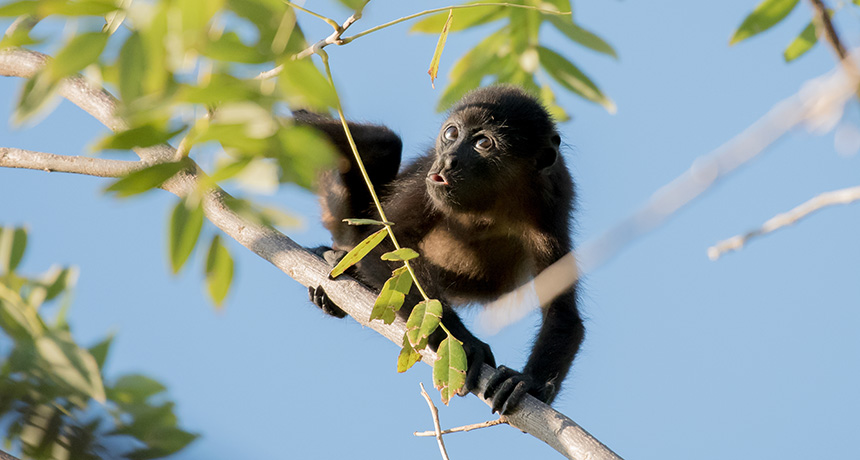Howler monkeys may owe their color vision to leaf hue
Distinguishing red from green makes healthier leaves stand out

MONKEY BUSINESS Being able to tell red and green apart helps howler monkeys like this one pick out younger, more nutritious leaves, research suggests.
Lorraine Logan/Shutterstock






